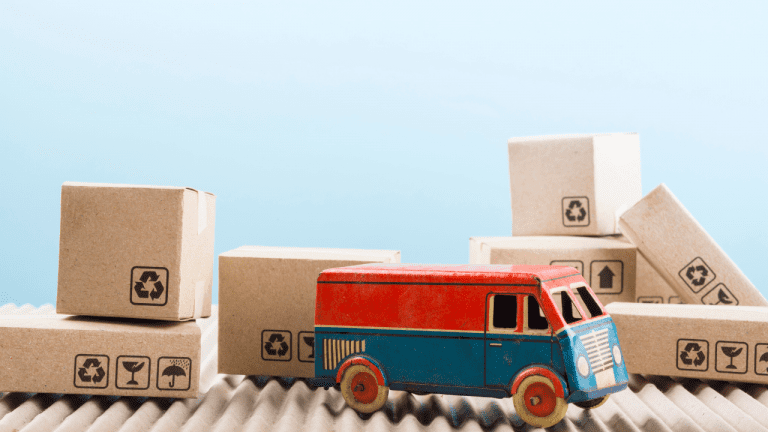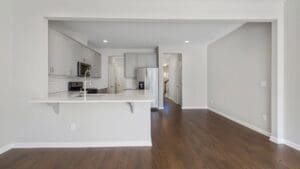Last updated on February 1st, 2024

Migrating to Australia is a costly journey, and none of us likes to do it more than once although I’ve done it a number of times and helped move hundreds of others. So let me share some of the tips and common mistakes I have seen people make. Nobody likes unwanted surprises during such a stressful time of your life.
Today’s topic is about budgets, specifically how you can save money. Everybody wants to save money on their move and not get ripped off. It is an expensive journey. With a jet-lagged mind, you will need to be making important decisions that will impact the rest of your life.
The tips I’ll be giving you today can save you literally thousands of dollars. In the book Your D.I.Y Move Guide, I go into a lot more detail and give you further advice. Also, if your situation seems quite unique, you have the opportunity to book a consultation with me. I can go through your relocation plans, your timeline or maybe just check your removals quotes.
How To Save Money When Migrating to Australia
Time your Move
Now you might not realise it, but summer in Australia (December-January) is the most expensive time to move. If you’re migrating from the Southern Hemisphere to Australia, you are going to be moving in both countries during the summer. Hence, your removalist quotes are always a lot higher.
Many people want to move for the start of the school year in January – summer in Australia. If you are moving from a country also located in the Southern Hemisphere, chances are you will have about 8-10 weeks shipping time.
Top tip: Consider sending your goods late November, taking a holiday and arriving in Australia early January. That way you have less time in high season Australia to pay for accommodation and you arrive less stressed and more cohesive as a family ready for your new challenge.
Include Overland Transport and Port Delays
Removalists, although they might say your goods will be at sea for six to eight weeks, that’s generally only the time that it’s actually at sea. It’s not the time travelling down to the port, loading the vessel, offloading on the other port side.
It might be at least two weeks on either side at either port. That’s going to add onto your costs because the longer you are without your furniture, the more hidden costs you will incur.
Top tip: Until you’ve received your own furniture, you’re not back in your routine. Hidden costs mount up, so make sure you have a very accurate timing from your removalists.
Removalists are always very keen to only give you the dates at sea because they can’t control what happens in the ports. But once the vessel is at sea, the shipping lines do not vary, and this is usually an accurate time for them to quote.
Calculate Insurance in Your Overall Cost
On your removals quotes, the insurance is based on a percentage of the value you place on your personal items. At the time of quoting, the removalist doesn’t ask you this value, so they only quote insurance as a percentage, it is not included in your grand total of the quote. You must check this percentage.
Top tip: If you are comparing quotes, this must be considered in your price comparison. Your insurance should be anything between 2.5% and 3.5% or at worst 4%.
Work out what your replacement value might be and make sure you add that percentage to your total because that can make a very big difference in prices. Another point to check is the excess on your insurance. Compare this too in the event of breakages.
While we’re talking about insurance, I just wanted to mention jewellery. Make sure that you insure your jewellery. It is not ever covered under removals quotes or under removals insurance. Rather include your jewellery in any personal insurance that you’re travelling with when migrating to Australia. I highly recommend reading/watching our interview with Glenn Thomas of GT Insurance Brokers. He shared plenty of insurance tips.
Remember:
Your move is always different to someone else – don’t try compare.
There are so many things that impact migrating to Australia. It is very hard for you to compare your quote with anybody else. The differences could be:
- Access differences at the home – stairs, parking permits, shuttle vehicles
- Packing requirements – Crating items, TV’s, Fine art or oversized furniture
- Distance from the port and the method used to transport to port, train or road
Consider Removalist Accreditation
While we’re talking about furniture removals, it’s very hard for you to “compare apples with apples.” You can’t compare an accredited removalist to a removalist that’s not credited and if you are making an international move and truly value your possessions then always use an accredited removal company. They have standards and quality that are monitored in order to maintain their accreditation. It is your peace of mind.
An accredited removalist is a removals company that perhaps belongs to FIDI. The other worthwhile accreditation is B.A.R.

In short, accredited removalist is going to be more expensive. Their teams are trained they have services levels they must meet. You shouldn’t try and compare an unaccredited removalist who may contract your job out or have unskilled labour.
Don’t Bring Everything
White goods
You should carefully consider if you want to bring white goods (fridge, washing machine). If they are over, perhaps, five years old, they might last only another year or two here and need replacing anyway. Plus, most rental properties come with a dishwasher, cooktop and oven.
If you’re coming from the United States, you might need transformers and that’s not sustainable on a long-term basis.
Linens
Our bed sizes in Australia are quite unique sizes; compare them to see if your linen is going to fit. Chances are, you will need beds as soon as you have a home and your furniture might be a little way off arriving still. Mattresses and pillows don’t have a long life and chances are they will need replacing anyway. They are bulky in a container and might as well just be replaced here.
Bookcases
Bookcases take up space in your container and they can take a lot of weight. They’re very cheap to replace, I would recommend you give them serious consideration.
Children’s car seats
Car seats in Australia are very unique. They have a tether strap that goes over the back of the car seat and anchors in the boot. A car seat must be approved by the Australian Bureau of Standards. Remember to add car seats to your order for your airport transfer or your car hire.
Speaking of car hire with car seats; if you’re going to be hiring a car for longer than two weeks generally the price to hire a car seat with the car hire company is $14 per day. If you’re hiring for longer than two weeks, you can buy a car seat for less than that. You can buy it online and have it delivered to you.
We recommend reading our guide to saving on shipping furniture.
Be mindful of the first month
One of the things that people are often not mindful of is meals in the first week. You’re travelling around looking at rental properties, you’re going to eat lunch on the run and you’re probably going to get takeaways on the way home because you’re so tired.
Lunch for a family of four with a few toasted sandwiches and drinks could set you back around $100 – let’s face it, you are going to have a sit-down meal because you need to use the bathroom. You do that for the first five days while you are jet-lagged and brain fogged, suddenly $500 is gone. Set yourself a daily food budget, so no matter how tired you are, you know you are in control.
Travel cards
People often don’t consider top-up costs. If you’re going to be using public transport, you’re going to need a travel card. The cost of the cards varies. In some states, it’s free such as the Opal card in Sydney. Here in Melbourne, the Miki card costs around $6.40 per person. It’s cheaper for children but you also need to think about the top-up that you need for those cards. I would plan for around thirty dollars per person to top it up. For a family of four that is another $120.00 out your pocket.
Go for second-hand uniforms
If you watched the video I did last month on children, remember to include those school uniforms and school books. If your children are going to a private school, you’re looking at anywhere between $800 and $1000 for their school uniform. If they’re at a state school, you could get away with around about $300 to $400.
There are second-hand school uniform shops with most schools, so always ask that question because, especially private schools that the blazer they wear just to arrive at school, there’s no need to spend $300 on a blazer. Every school state and private schools–all have second-hand shops some of them are online. Don’t be shy to ask. You can read more about school structures in Australia here.
Have a look for Facebook buy and sell pages that offer school uniforms, school shoes and school books. There are a number of recycling online shops for books too.
Rent furniture
A lot of people don’t think about or know about the option of furniture rental. I really want to bring your attention to this cost saver. If you’re going to be staying in a short-term apartment or a hotel while you’re house hunting, don’t think that you need to stay in that for the full five, six or ten weeks–whatever length of time it’s taking for your furniture around to arrive.
You can find a home, rent furniture and get out of that hotel. Remember, the longer you are out of routine, the more hidden costs you will incur. On average, a hotel might be costing you $1,500/week; to rent furniture for, I would say, a family of four, you’re probably looking at $800/week.
Children can be enrolled in school. You’re back to cooking your own meals and you’re not having any of those hidden costs anymore, so don’t forget rental furniture.
Make use of relocation service
A relocation service like ours will have you skip hotels completely and have us holding your hand the whole way through your relocation so that you know that you’re making important decisions quickly and correctly.
Relocation service is cheaper than staying in a hotel and we can even find a home for you before you arrive. I’ve had a client this week–arrived in quarantine on Tuesday, today is Saturday, and we were accepted on her house today. Now her quarantine time is left to book driving license and other paperwork because she has an address.
Last but not least, while we are discussing money, don’t forget that to commence the rental lease, you need to pay one month’s rent and one month’s bond. Hence, make sure that you have at least eight and sometimes even ten weeks bond available to secure your rental home. The rental market here moves very quickly and you’ll know that from our previous video you have to be organized.
In closing, these are just some of the common budget mishaps when migrating to Australia. If you found this helpful, please share it with others who are also on a migration journey, we can all help each other. If you see someone on social media with questions please direct them here. Make sure you subscribe on our website for free downloads and other tips and events. You can also follow us on Facebook and LinkedIn.
This article is based on a Facebook live video published on 6 February 2021. You may watch the full video below.








